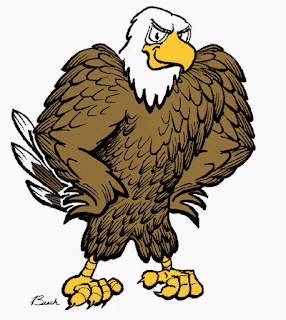Introduction
"The Parliament of Fowls" is a Middle English dream vision poem written by Geoffrey Chaucer in the 14th century. It is often considered one of the earliest examples Valentine Love of English literature. The poem explores various themes, employs a unique style, and has been subject to both praise and criticism.
Theme
The main theme of "The Parliament of Fowls" is love and courtship, particularly the concept of "the mating season." The poem takes place on Valentine's Day when all the birds gather to choose their mates. Chaucer presents a vision of love where birds become allegorical representations of human desires, emotions, and choices in love. The poem unveils the complexities of romantic relationships, the fickleness of desire, and the influence of nature on love. But most interestingly , it suggests 'a manner in which the Parliament may be read not as subject and content but as process and act.'(M.R. Near)
Style
Chaucer's style in "The Parliament of Fowls" reflects his skill as a storyteller and his mastery of poetic techniques. The poem is written in rhyme royal, a seven-line stanza form with a consistent rhyme scheme (ABABBCC). Chaucer's use of intricate imagery, vivid descriptions, and allegorical language enhances the overall beauty of the poem. He weaves together elements of dream vision, pastoral poetry, and allegory to create a unique and enchanting narrative.
Story
 |
| Geoffrey Chaucer |
"The Parliament of Fowls" begins with the narrator reading Cicero's Somnium Scipionis in search of knowledge. As he falls asleep, Scipio Africanus appears and guides him through celestial spheres to a gate leading to both a "welle of grace" and a stream representing sorrow. So its a dream vision. After contemplation, the narrator enters the gate, passing through Venus's dark temple adorned with depictions of doomed lovers and emerging into sunlight. Nature calls a parliament where birds gather to choose their mates.
The three male eagles, called tercels, present their cases to win the female eagle, a formel. However, the lower-ranking birds protest, leading to a humorous parliamentary debate. Nature intervenes, bringing an end to the debate. None of the tercels succeed in winning the formel's hand, as Nature grants her request to postpone her decision for another year. This reflects the natural behavior of birds of prey, where females reach sexual maturity at one year while males do so at two.
Nature, as the governing figure, acknowledges the significance of free will by allowing the formel to exercise her right not to choose. This highlights the theme of common profit, emphasizing the importance of individual agency. The other birds are permitted to pair off according to their own choices. The dream concludes with a song welcoming the arrival of spring. The dreamer awakens, still unsatisfied, and returns to his books in the hope of finding the knowledge he seeks. The dreamer's quest for certainty remains unfulfilled, leaving an open-ended conclusion.
Criticism
"The Parliament of Fowls" has garnered both praise and criticism over the centuries. It is often accused of Lack of coherence, Limited character development, Stereotypical gender roles and Ambiguity of the ending.
Critics argue that the poem lacks a clear narrative structure and often appears fragmented. The transitions between different bird allegories and the main plotline can be confusing and disjointed. While Chaucer gives each bird species distinct characteristics and voices, the individual birds themselves are not deeply developed as characters. They serve primarily as representations of different aspects of love rather than fully fleshed-out individuals. The poem reinforces traditional gender roles and stereotypes prevalent during Chaucer's time. The male birds are portrayed as active suitors, while the female birds are passive objects of desire. This depiction has been criticized for perpetuating gender inequalities and limited portrayals of female agency. The poem concludes with an unresolved choice, leaving readers unsure of which mate the female eagle ultimately selects. Some critics find this ambiguity frustrating and argue that it detracts from the overall satisfaction of the narrative.
Despite these criticisms, "The Parliament of Fowls" remains a significant work in the English literary canon. Its exploration of love, its lyrical style, and its vivid imagery continue to captivate readers and scholars, showcasing Chaucer's skill as a poet and his contribution to medieval literature. Albert is of high praise of "it's fine opening, and, in the characterizations of birds, which shows Chaucer's true comic spirit." (ALBERT, 2000) Notably it is a poem of 'a quest for a point of resolution, a point never attained and perhaps unattainable.' (M.R. Near, 1985)
Reference:
1. Parlement of Foules - Wikipedia. (n.d.). Parlement of Foules - Wikipedia. https://en.wikipedia.org/wiki/Parlement_of_Foules
2. British Library. (n.d.). British Library. https://www.bl.uk/collection-items/the-parliament-of-fowls
3. Near, M. R. (1985). Chaucer’s Parliament of Fowls: Reading as an Act of Will. Pacific Coast Philology, 20(1/2), 18–24. https://doi.org/10.2307/1316511
4. ALBERT. (2000). History of English Literature (Fifth Edition) [English]. OXFORD UNIVERSITY PRESS.


Comments
Post a Comment
Drop any query, suggestion or comment here.